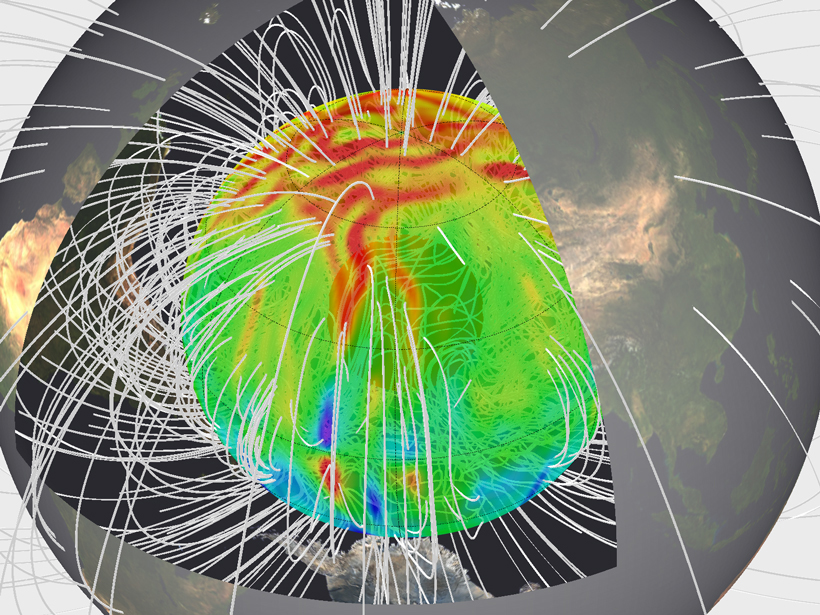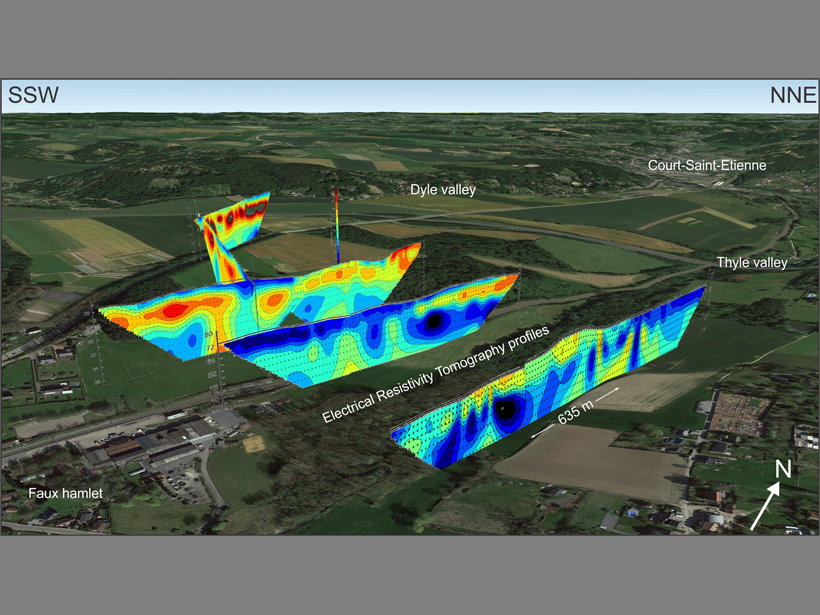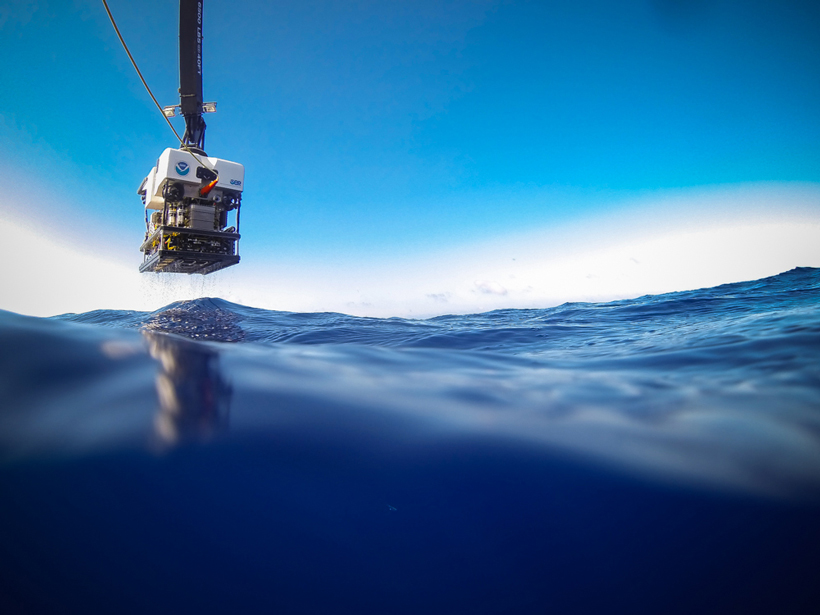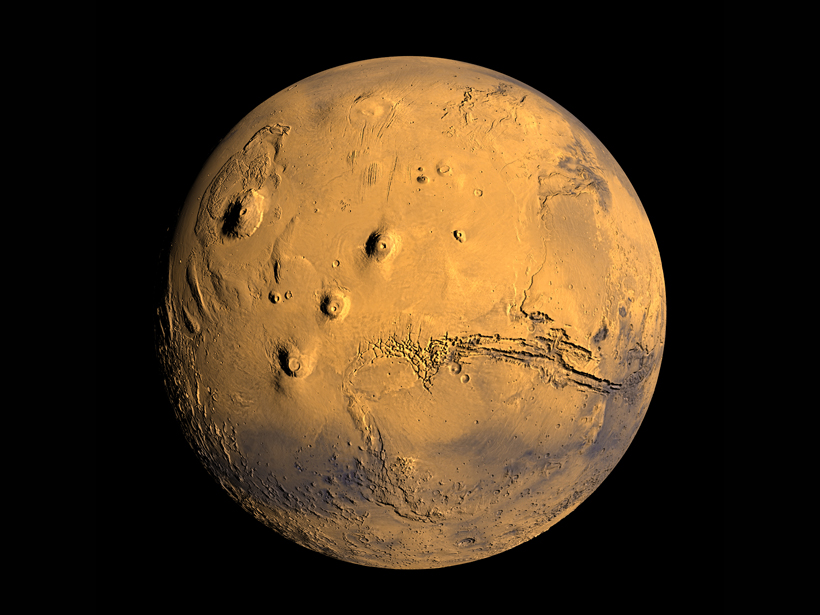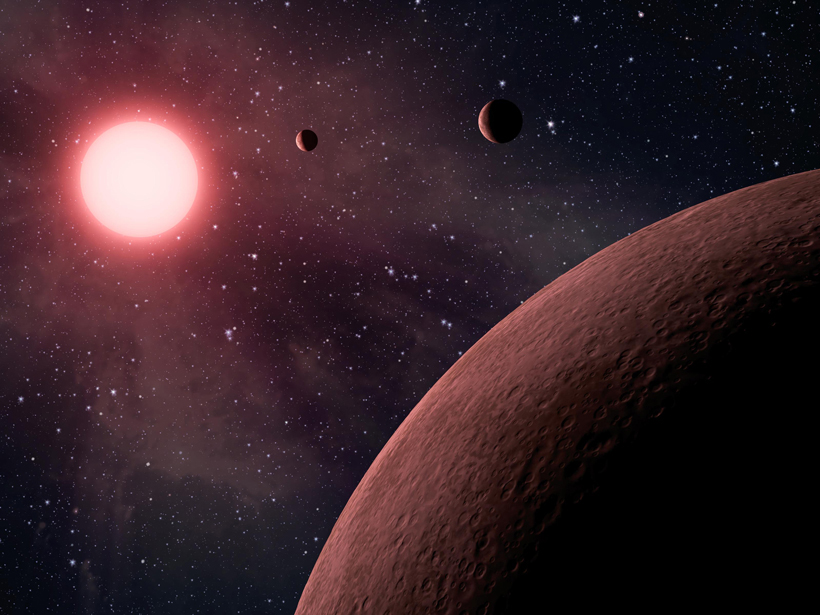In a proof-of-concept experiment, researchers test out how well a pair of fisherman's waders can sense changes in water temperature.
cool tools
Which Geodynamo Models Will Work Best on Next-Gen Computers?
A new study uses identical tests to evaluate the accuracy and performance of current models of Earth's magnetic field, then extrapolates the results to anticipated "petascale" supercomputers.
White House Showcases Earthquake Alerts, Federal Quake Readiness
A prototype ShakeAlert early warning system approaches alert-ready status as the administration issues an executive order on federal earthquake standards.
Visualizing Cross-Sectional Data in a Real-World Context
Combining the capabilities of an open-source drawing tool with Google Earth maps allows researchers to visualize real-world cross-sectional data in three dimensions.
The Case for Multiuser Facilities
As federal agencies look to slash costs, facilities become obvious targets. But cutting funds to these vital programs may have far-reaching consequences.
Using Sounds from the Ocean to Measure Winds in the Stratosphere
Stratospheric winds deflect acoustic waves from the oceans. With the right data and the math to analyze them, these waves tell us about the weather aloft.
Autonomous Undersea Technologies to Vie for New XPRIZE
The competition aims at improved health and understanding of Earth's oceans by spurring teams to devise better robotic technologies for seafloor mapping and exploration.
Taking the Pulse of the Earth's Surface Systems
As human activity alters the Earth's surface environment in unprecedented ways, a comprehensive survey campaign is necessary to predict future impacts.
3-D Models Put Scientists, Students in Touch with Planets
Three-dimensional printing gives planetary scientists new ways to explore distant worlds and engage students.
Kepler: A Giant Leap for Exoplanet Studies
NASA's low-cost space telescope opened up a universe of possibilities for scientists who scour space in search of planets—and possibly life.


